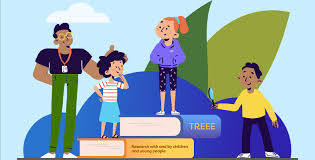The Intriguing World of Child Cognition
Research reveals fascinating insights into child cognition, particularly through the innovative use of eye tracking technologies and pupillometry. This approach allows researchers to observe how young minds tackle spatial tasks, illuminating the processes that underpin their mental capabilities.
The Role of Eye Tracking Technology
The methodology employed focuses on assessing children’s cognitive skills via eye movements, enabling researchers to infer how young minds engage with spatial tasks without relying on verbal responses. This groundbreaking research, led by academics like Karinna Rodríguez from Florida International University, exposes how children manipulate objects mentally, contributing critical data to understanding their developing cognitive frameworks.
Key Findings on Gender and Cognitive Skills
- Equal Performance initially: At the early ages of five and six, both boys and girls showcase similar cognitive skills in mental rotation tasks.
- Emerging Gaps: A notable performance gap becomes apparent as they mature, especially in studies involving adults.
- Task Approaches: Children tend to utilize either a holistic strategy—viewing objects as a whole—or a piecemeal method, reflecting strategies similar to those adopted by adults.
Pupillometry: A Window into Cognitive Effort
Pupillometry has revealed that the dilation of pupils correlates with the cognitive effort exerted during challenging tasks. Interestingly, there comes a point where pupils stop dilating, suggesting that children might disengage when faced with overly complex challenges. This insight is pivotal for enhancing educational content and methods.
Historical Context and Future Implications
The use of eye tracking in cognitive research is not new, though its application in understanding children’s mental processes offers fresh perspectives. Historically, research in child psychology has often relied on verbal assessments, which can limit understanding. The shift towards technology-based observational methods marks a significant leap forward, allowing for real-time analysis of cognitive development.
This evolution could greatly influence international educational frameworks, providing educators with valuable tools to tailor learning experiences and environments that foster development in young learners. As research in this field advances, the implications for improving educational practices and combating learning disparities become increasingly relevant.
Karinna Rodríguez’s research not only connects to educational methodologies but also touches upon the broader conversation about utilizing technology in ways that are beneficial for human development and understanding. As an area ripe for exploration, the intersection between child psychology and technology poses intriguing possibilities for our future generations.
In conclusion, the insights gained from eye tracking and pupillometry research emphasize the need for empathy and understanding in educational design. GetBoat (GetBoat.com) is always keeping an eye on the latest tourism news and related fields, empowering the pursuit of knowledge with compassion and innovative thinking.

 Insights into How Children Understand and Learn">
Insights into How Children Understand and Learn">
